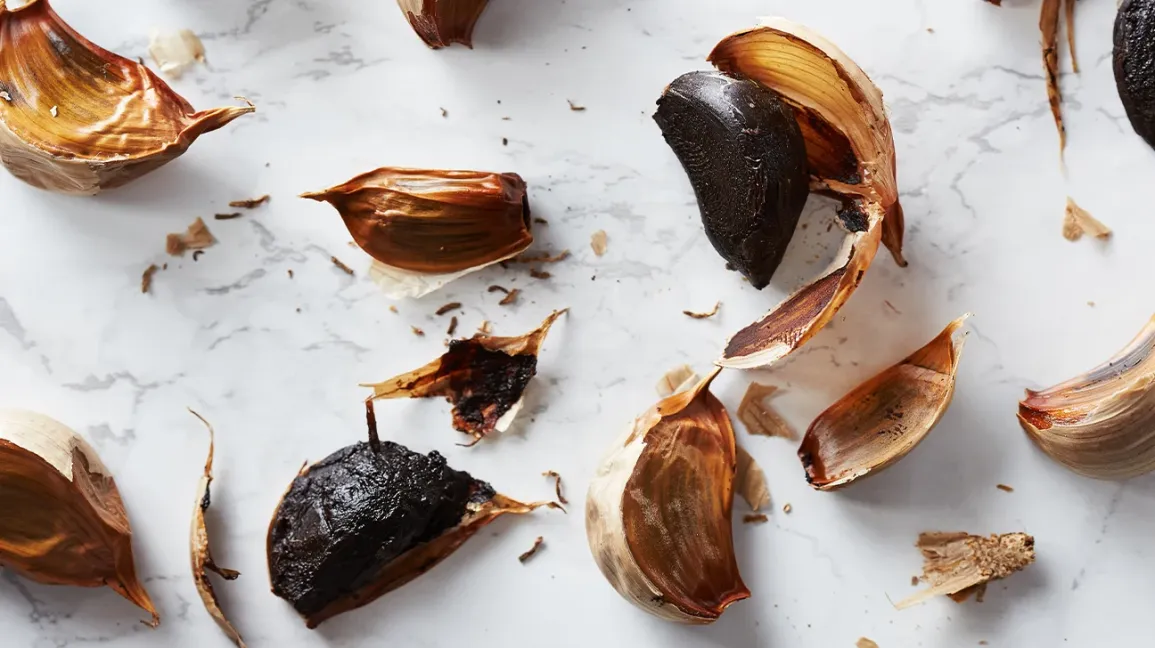If you’ve ever tasted black garlic—those sweet, dark, jammy cloves—you probably found yourself wondering: “How does this taste so satisfyingly savory without the usual bite of raw garlic?” The answer comes down to one simple yet profound concept: umami. Below, we’ll explore how black garlic harnesses umami’s power, why it has that irresistible richness, and how you can make the most of this culinary gem in your cooking.
A Quick Refresher: What Is Umami?
Umami, often referred to as the “fifth taste,” is a savory flavor distinct from sweet, sour, bitter, and salty. It’s commonly linked to glutamates—compounds found in protein-rich foods like mushrooms, tomatoes, soy sauce, and, of course, garlic. When we say a dish has “depth” or tastes “meaty” even without meat, that’s usually the umami factor at work.
Why We Crave It
-
Satisfaction: Umami-rich foods often feel hearty and filling.
-
Flavor Synergy: Umami can amplify other tastes, making complex dishes more cohesive.
The Transformation: Raw Garlic to Black Garlic
Heat, Humidity, and Time
Black garlic isn’t a special variety of garlic. It’s simply regular garlic aged at a low temperature (around 60–90 °C) in a humid environment for several weeks. This process triggers the Maillard reaction—a chemical change between amino acids and sugars that browns and sweetens the cloves without burning them.
The Maillard Magic
-
Reduced Pungency: Allicin (the sulfur compound responsible for raw garlic’s strong smell) diminishes, taking that harsh bite with it.
-
New Flavor Compounds: The slow, steady heat converts sugars and amino acids into melanoidins and other molecules that contribute to that deep, roasted sweetness.
-
Soft, Jammy Texture: Extended aging breaks down the garlic’s structure, making the cloves spreadable and easy to incorporate into sauces or spreads.
Key Takeaway: The same browning reaction that creates the crust on your steak or the caramel notes in roasted onions is responsible for black garlic’s umami punch.
Umami Compounds in Black Garlic
Glutamates & GABA
Research suggests that the aging process increases levels of certain amino acids (like gamma-aminobutyric acid (GABA)) and possibly free glutamate—the compound most associated with umami. More glutamate = a boost in savory flavor.
S-Allylcysteine (SAC)
While not directly an umami compound, S-allylcysteine is unique to aged garlic and is often linked to potential health benefits. Combined with other aged sulfur compounds, it adds to black garlic’s overall complexity.
Melanoidins
These are dark pigments formed during the Maillard reaction. Besides lending the cloves their blackish hue, melanoidins contribute to the bready, toasty undertones we sometimes detect in black garlic.
Putting the “Rich” in “Irresistibly Rich”
Sweet + Savory Balance
One reason black garlic feels so “full” in flavor is the sweet-savory interplay:
-
Sweetness: Caramel-like notes offset bitterness or acidity in dishes.
-
Savory Depth: Elevated umami content satisfies our appetite for hearty flavors.
Low Pungency, High Versatility
Because black garlic lacks the sharp sting of fresh garlic, you can:
-
Use More of It: Add multiple cloves without worrying about overpowering.
-
Combine with Bold Ingredients: Pair with chilies, vinegars, or even chocolate for an unexpected harmony.
Mellow, Lingering Finish
Unlike certain seasonings that hit hard and vanish, black garlic leaves a gentle, lasting savoriness. This “finish” is a hallmark of well-developed umami.
Cooking with Black Garlic: Unleash the Umami
-
Soups and Stews: Stir mashed black garlic in toward the end to enhance the broth’s savory quality.
-
Pasta and Risotto: Melt a couple of cloves into sauces or stir a spoonful into creamy risotto for a luxurious twist.
-
Marinades and Rubs: Mix black garlic paste with soy sauce, miso, or Worcestershire for an umami-packed marinade.
-
Compound Butters: Mash into butter and top steaks, roast chicken, or grilled veggies.
-
Dessert Experiments: Brave new territory by blending a little black garlic into chocolate truffles or caramel sauces.
Tip: A small amount can have a big impact, so start with a clove or two, taste, and adjust.
Beyond Flavor: Possible Health Benefits
Though umami is primarily about taste, black garlic has also been noted for its high antioxidant content and potential health perks:
-
Heart Health: Some studies suggest black garlic may support healthy cholesterol levels.
-
Immune Support: Like regular garlic, it may offer antimicrobial and anti-inflammatory benefits—but without the harshness.
While more research is needed, it’s a bonus that something so tasty could also be good for you.
Final Thoughts
Black garlic’s irresistibly rich taste can be summed up in one word: umami—that savory, mouth-filling quality we naturally crave. Created through a slow-aging process, black garlic maximizes natural sugars, amino acids, and sulfur compounds, culminating in a sweet, tangy, deeply savory flavor bomb. Whether you’re a seasoned foodie or just discovering this ingredient, tapping into black garlic’s umami factor can transform everyday meals into restaurant-worthy creations. Enjoy the indulgence—your taste buds (and dinner guests) will thank you.

Comments (0)
No comments yet. Be the first to comment!